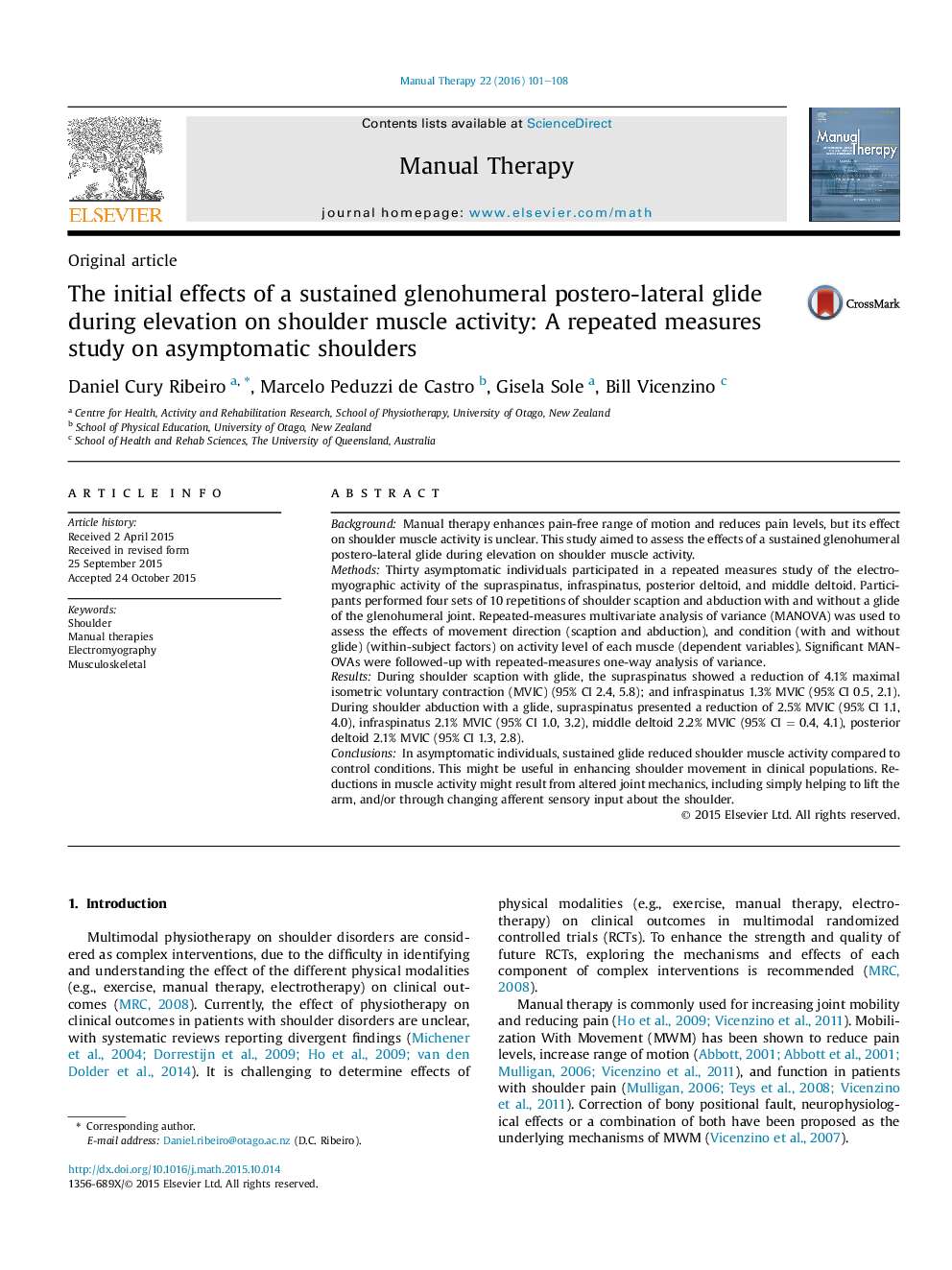| کد مقاله | کد نشریه | سال انتشار | مقاله انگلیسی | نسخه تمام متن |
|---|---|---|---|---|
| 2624934 | 1563096 | 2016 | 8 صفحه PDF | دانلود رایگان |
• Sustained glide reduced activity of monitored shoulder muscles.
• Changes in muscle activity were small.
• Functional significance of muscle activity change is to be determined.
• Sustained glide might alter joint mechanics and/or afferent sensory input.
BackgroundManual therapy enhances pain-free range of motion and reduces pain levels, but its effect on shoulder muscle activity is unclear. This study aimed to assess the effects of a sustained glenohumeral postero-lateral glide during elevation on shoulder muscle activity.MethodsThirty asymptomatic individuals participated in a repeated measures study of the electromyographic activity of the supraspinatus, infraspinatus, posterior deltoid, and middle deltoid. Participants performed four sets of 10 repetitions of shoulder scaption and abduction with and without a glide of the glenohumeral joint. Repeated-measures multivariate analysis of variance (MANOVA) was used to assess the effects of movement direction (scaption and abduction), and condition (with and without glide) (within-subject factors) on activity level of each muscle (dependent variables). Significant MANOVAs were followed-up with repeated-measures one-way analysis of variance.ResultsDuring shoulder scaption with glide, the supraspinatus showed a reduction of 4.1% maximal isometric voluntary contraction (MVIC) (95% CI 2.4, 5.8); and infraspinatus 1.3% MVIC (95% CI 0.5, 2.1). During shoulder abduction with a glide, supraspinatus presented a reduction of 2.5% MVIC (95% CI 1.1, 4.0), infraspinatus 2.1% MVIC (95% CI 1.0, 3.2), middle deltoid 2.2% MVIC (95% CI = 0.4, 4.1), posterior deltoid 2.1% MVIC (95% CI 1.3, 2.8).ConclusionsIn asymptomatic individuals, sustained glide reduced shoulder muscle activity compared to control conditions. This might be useful in enhancing shoulder movement in clinical populations. Reductions in muscle activity might result from altered joint mechanics, including simply helping to lift the arm, and/or through changing afferent sensory input about the shoulder.
Journal: Manual Therapy - Volume 22, April 2016, Pages 101–108
